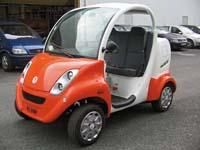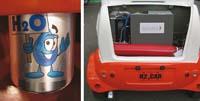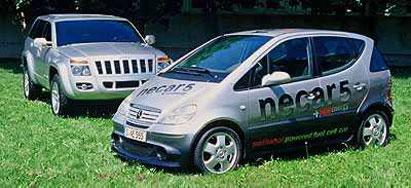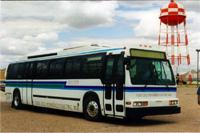The future will travel by hydrogen
2008/09/01 Kortabitarte Egiguren, Irati - Elhuyar Zientzia Iturria: Elhuyar aldizkaria

The Tecnalia Energy Unit presents a quiet and cheap car prototype that works with a hydrogen fuel-cell. It is named after H2CAR. It has an electric motor and electricity is generated by a fuel cell that uses hydrogen. In addition, it has an auxiliary battery. According to its creators, this is the main novelty. That is, a mixed car that uses the battery and hydrogen.
Cheap and quiet
Like all automatic vehicles, it only has accelerator and brake. The trunk has a bottle of hydrogen to feed the fuel cell that will produce the electricity necessary for the operation of the vehicle. The battery will provide you with an additional acceleration force. The battery is charged in a few minutes in a 220 V jack, just like mobile phones.
The current prototype can travel 200 kilometers with each load and is not yet able to exceed 60 km/h. As for the cost per kilometer, Luis Pedrosa, director of the Energy Unit of Tecnalia, stressed that "filling the tank, that is, charging the battery of the electric vehicle and the fuel cell, costs between 6 and 8 times less than filling the car that uses gasoline to achieve the same autonomy". Hence he has been literally baptized. Silent, why? The usual sound of rolling and light sound emitted by the electric motor cooling system and the fuel cell are perceived during driving.
Besides being cheap and quiet from the environmental point of view, the H2CAR exhaust does not emit carbon dioxide but water vapor. In fact, when hydrogen is combined with oxygen in the fuel cell and electricity is obtained, this reaction only emits water. In this process "we can say that at least 80% of the vehicle's emissions from conventional cars are reduced," added Pedrosa. And it is that there have been emissions both in hydrogen and electric generation production plants.
The automotive industry does not doubt that the vehicle of the future will be electric. However, the generation of this electricity by a fuel cell that uses hydrogen must solve the current problems of hydrogen.
The problem of hydrogen

"Hydrogen can become an opportunity, but there are still many challenges to face to make hydrogen a reasonable alternative: efficient large-scale production, storage, safety...", explains Javier García-Tejedor, deputy director of the Tecnalia Energy Unit.
"At present, most of the hydrogen is obtained from hydrocarbons. In the future, hydrogen should be produced from water." What is clear is that it must be produced. "Because hydrogen is not a source of energy, since it cannot be taken from nature," said García-Tejedor.
With this prototype vehicle, Tecnalia wants to demonstrate the viability of the electric hydrogen vehicle as a real transportation alternative. Now he wants to develop the technologies necessary for practical use and hope that at some point on the roads only cars with hydrogen fueled fuel cells will be seen. But there is still much to do. Hydrogen is not expected to expand by 2020 or 2030 for normal use.

Gai honi buruzko eduki gehiago
Elhuyarrek garatutako teknologia





